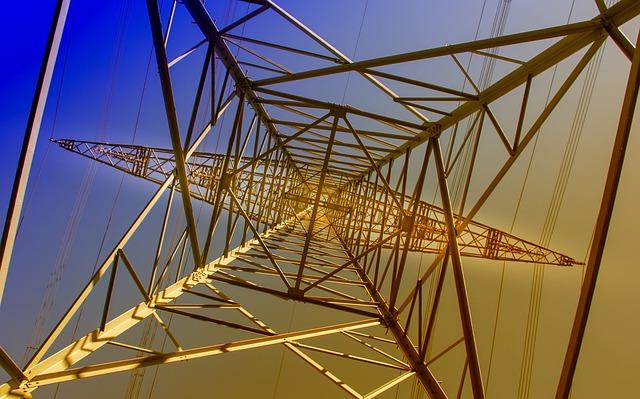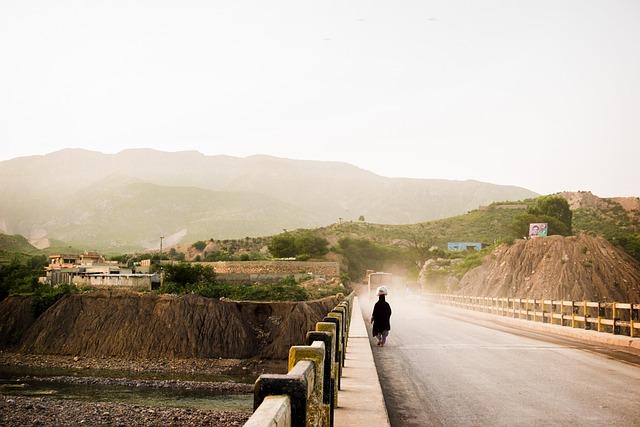In a world where progress is measured by the strength of a nation’s infrastructure, Pakistan stands at a pivotal crossroads. With the heartbeat of its cities pulsing to the rhythms of rapid urbanization and economic ambition, the need for a transformative approach to infrastructure development has never been more pressing. From congested highways to aging public transport systems, the challenges are daunting, yet the potential for revitalization is equally vast. As the government, private sectors, and communities collaborate in envisioning a future where modernity meets sustainability, the landscape of Pakistan is poised for a renaissance. This article delves into the multifaceted strategies and innovative projects aimed at revamping Pakistan’s infrastructure, exploring how each initiative seeks to bridge the gap between aspiration and reality. Join us on a journey through the challenges, opportunities, and visionary plans that could redefine the very foundation of this vibrant nation.
Innovative Approaches to Urban Planning and Sustainable Development
Urban areas in Pakistan are witnessing a transformative push toward innovative designs and eco-friendly practices that not only address immediate infrastructural needs but also aim for long-term sustainability. Green architecture, which emphasizes energy efficiency and utilizes local materials, is gaining traction in major cities. Methods such as vertical gardens and green roofs are being integrated into modern buildings to combat urban heat and improve air quality. Additionally, the incorporation of public green spaces fosters community engagement, supports biodiversity, and provides city dwellers with much-needed recreational areas. Urban planners are increasingly turning to smart technologies, employing IoT and big data analytics to design more responsive and adaptive urban environments that can dynamically manage resources and reduce waste.
Successful case studies from around the world illustrate the importance of participatory design and community involvement in the planning process. Residents are now being invited to voice their needs and priorities, leading to more inclusive urban development strategies. Furthermore, initiatives like mixed-use developments and transit-oriented design are reshaping neighborhoods into vibrant hubs that encourage walking and public transport use over reliance on cars, thus reducing carbon footprints. In Pakistan, leveraging local talents for sustainable architecture and collaboratively enforcing new regulations can propel the country toward a greener future, ensuring that development does not come at the expense of the environment. Here’s a simple comparison of traditional vs. innovative urban planning approaches:
| Aspect | Traditional Planning | Innovative Planning |
|---|---|---|
| Resource Use | Linear Consumption | Circular Economy |
| Community Involvement | Minimal Engagement | Active Participation |
| Transportation | Car-Centric | Multi-modal Accessibility |
| Green Spaces | Limited Areas | Integrated Nature |

Enhancing Transportation Networks for Economic Growth and Connectivity
The transformative power of efficient transportation networks can significantly boost Pakistan’s economic prospects and facilitate seamless connectivity across regions. By integrating modern technology and infrastructure, it is feasible to create a robust transportation framework that not only connects busy urban centers but also enhances the accessibility of remote areas. This can be accomplished through:
- Expansion of Road Networks: Ensuring well-maintained highways and connecting rural roads to main arteries.
- Investment in Public Transit: Developing advanced metro systems and bus rapid transit projects in major cities.
- Upgrading Rail Services: Enhancing the efficiency and comfort of railway services for freight and passenger travel.
- Sustainable Practices: Incorporating eco-friendly transportation solutions, such as electric buses and bike-sharing programs.
Effective transportation systems act as the veins of an economy, promoting trade and ensuring that resources flow where they are needed most. To visualize the expected benefits, consider the following table showcasing potential impacts of improved infrastructure on various sectors:
| Sector | Impact | Expected Growth |
|---|---|---|
| Agriculture | Faster transportation of goods | 20% increase in exports |
| Tourism | Improved access to sites | 30% rise in visitors |
| Manufacturing | Reduced shipping times | 15% boost in production |

Digital Infrastructure as a Catalyst for Smart Cities
Incorporating advanced digital infrastructure is essential for transforming urban landscapes into thriving smart cities. This includes a comprehensive framework of high-speed internet, cloud computing platforms, and IoT devices that interconnect various urban systems. With these innovations, cities can manage resources more efficiently, reduce energy consumption, and enhance public safety. Emphasizing collaboration between public sectors, private companies, and local communities can yield a more dynamic and responsive urban ecosystem, paving the way for improved service delivery, and fostering economic growth. The future demands that these infrastructures are not only built but are also resilient, adaptable, and sustainable.
The integration of big data analytics can play a crucial role in identifying patterns that ultimately lead to smarter city planning. For example, traffic management systems powered by real-time data can streamline vehicular movement, reducing congestion and improving air quality. Other key elements include:
- Smart Lighting: Adjusting based on natural light and pedestrian presence.
- Waste Management Solutions: Utilizing sensors to optimize collection routes.
- Public Transportation Enhancements: Real-time updates and route optimization.
Such advancements create an ecosystem that not only improves the day-to-day lives of citizens but also attracts investments and talent, ensuring long-term viability. The move towards incorporating digital infrastructure signifies a commitment to harnessing technology for sustainable urban development, ultimately reconceptualizing the relationship between citizens and their environment.

Fostering Public-Private Partnerships for Future-Ready Projects
In an era where infrastructure demands innovation and efficiency, fostering collaborations between the public and private sectors emerges as an essential strategy. These partnerships can drive the execution of transformative projects that are both economically viable and socially beneficial. Key advantages of public-private partnerships (PPPs) include:
- Resource Optimization: Combining public oversight with private sector agility leads to more effective resource allocation.
- Risk Sharing: Distributing risks between sectors encourages investment and diminishes the financial burden on the government.
- Enhanced Innovation: The private sector often brings cutting-edge solutions and technologies that can revolutionize traditional project approaches.
To illustrate the potential of effective PPPs, consider a model where collaborative efforts focus on critical infrastructure such as transportation, energy, and technology. A strategic framework could delineate roles, responsibilities, and expected outcomes as follows:
| Sector | Public Role | Private Role | Expected Outcome |
|---|---|---|---|
| Transportation | Regulatory oversight and funding | Project design and management | Improved connectivity and reduced congestion |
| Energy | Policy framework and incentives | Investment and technology implementation | Sustainable energy solutions |
| Technology | Infrastructure support | Innovative software and services | Smart city advancements |
To Wrap It Up
As we stand at the crossroads of progress, the vision for a revamped Pakistan is not merely a dream but a blueprint poised to redefine the nation’s landscape. The potential for transformative infrastructure development symbolizes hope and opportunity, while embracing the challenges and complexities that lie ahead. With strategic planning, innovative technologies, and collaborative efforts, the future beckons with the promise of connectivity and advancement.
Whether it’s through modern transport networks, sustainable energy projects, or digital advancements, the path forward is a collective responsibility—one that requires us all to envision, invest, and innovate. As we embark on this journey, let us not forget that true development is paved with inclusivity, resilience, and sustainability.
In the tapestry of nations, Pakistan can weave a narrative of growth and prosperity, illustrating not just how far we’ve come, but how far we can go. The future is indeed bright, and with each brick laid in this new infrastructure, we bring forth a renewed sense of identity and purpose, laying the foundation for generations to come. Together, let us take this leap into a new era, where the infrastructure of tomorrow stands as a testament to the aspirations of a united, forward-thinking Pakistan.



